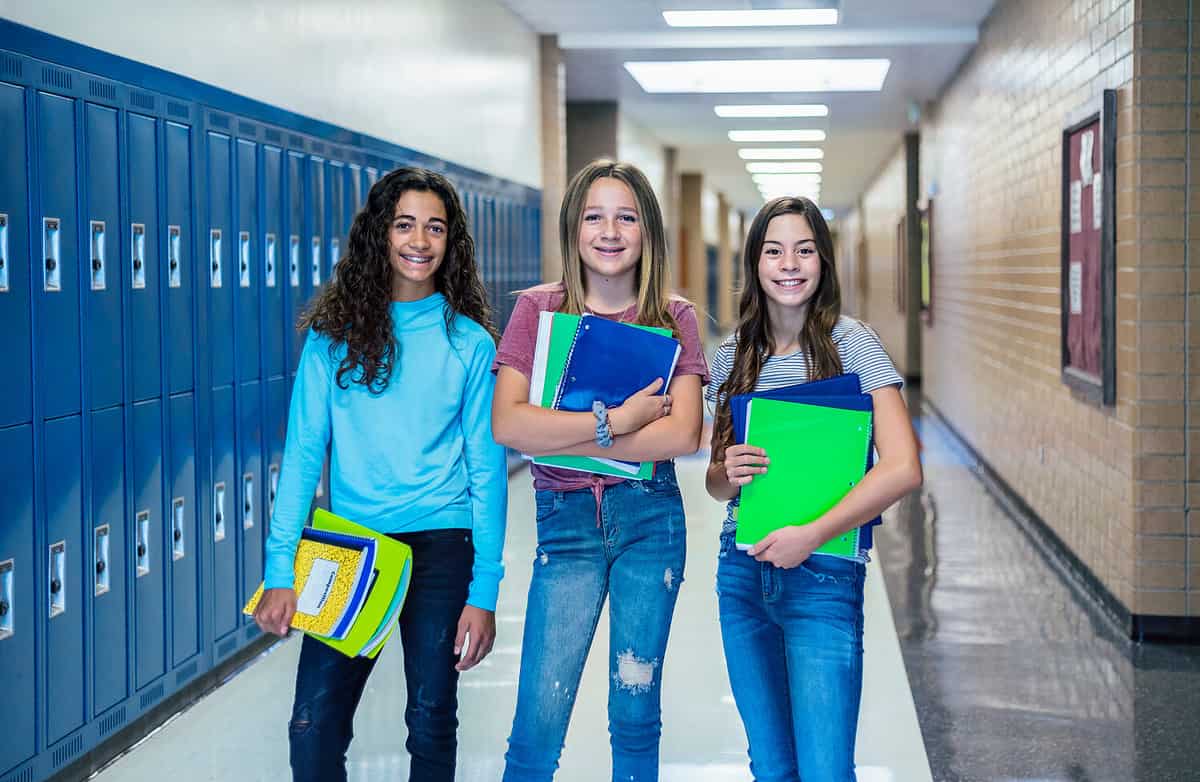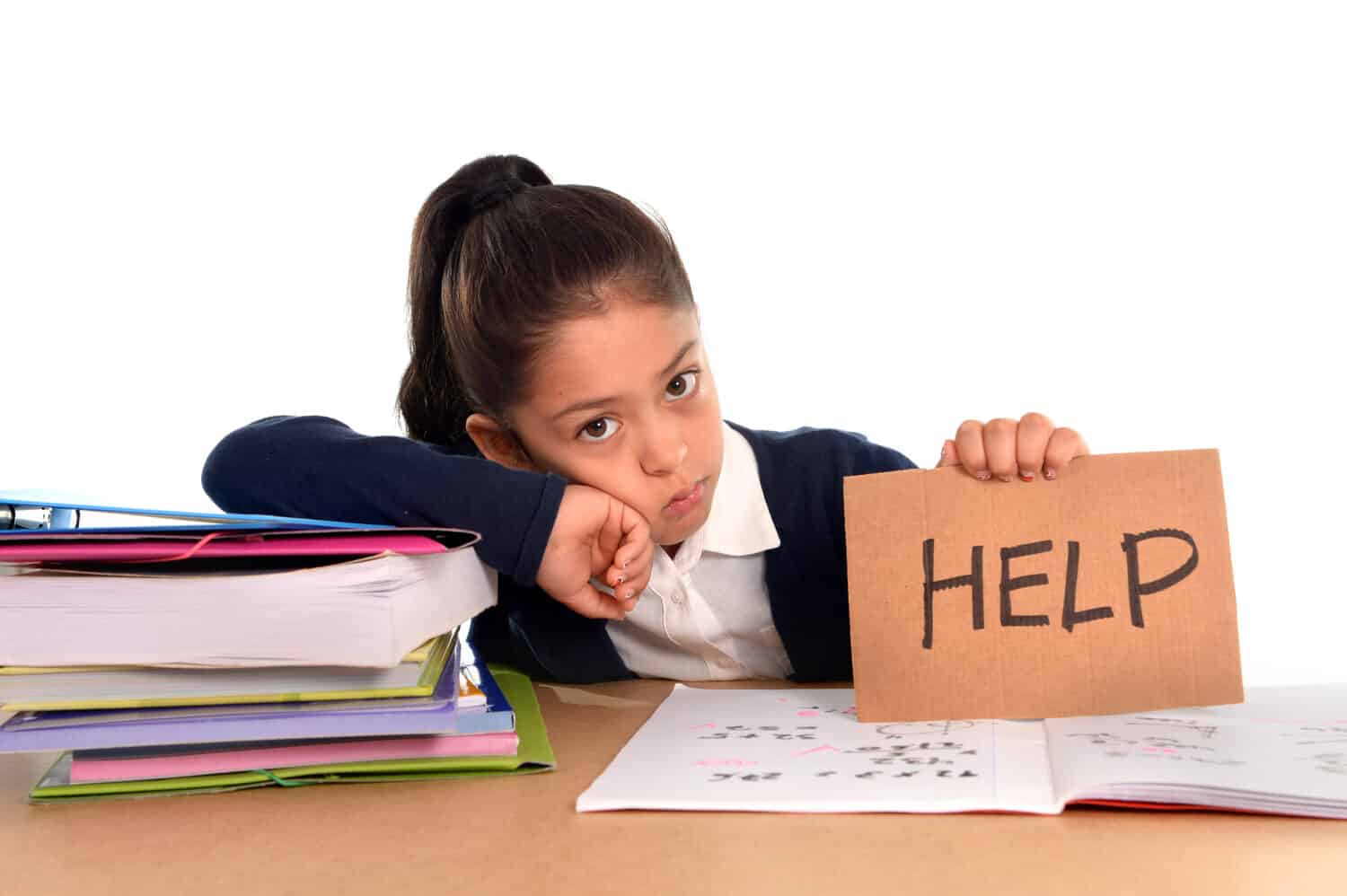The state of Pennsylvania is known for many amazing things, from being one of the original 13 founding states to being the location of where the founding fathers signed the U.S. Constitution. However, while the state is known for many famous acts that made our country as great as it is today, there are some areas of improvement when it comes to the schools. Though there are plenty of quality institutions, there are some where students should enroll with caution. Today, we’re going to talk about the worst schools in Pennsylvania.
When we determine the worst schools, we base it off of many different metrics. For the elementary, middle, and high schools, we look at test scores, student progress, and equity and diversity. For the high schools, we also look at how the institutions prepare the students for college or life after school. Finally, when judging the worst colleges, we’ll also determine which have the lowest graduation rate, which is a good indicator that there are some issues.
Worst Schools in Pennsylvania: Elementary Schools
Attending a good elementary school is essential because this is one of the first building blocks of our education. You need a school that’s supportive of all students and ready to educate children so they can succeed during the rest of their educational journey. Unfortunately, these schools fall short.
Sto-Rox El School
This school out of the Sto-Rox School District has 425 students that are in grades K-3rd. The school has some issues with test scores and some with equity. As far as the test scores, the school is falling far behind the state average, according to GreatSchools.org. Proficiency in math and English is below expectations and are below the state average.
As far as equity, low-income and other underserved students are falling behind their fellow students in the state, which indicates a potential achievement gap. There’s also an issue with students with disabilities and suspension rates. Students with disabilities have a higher suspension rate than those that aren’t considered disabled. On a good note, the school is fairly diverse.
On the teaching front, there's a fairly good student-to-teacher ratio of 12:1, which indicates that the students are getting fairly personalized teaching experiences. Also, 100% of the teachers are certified and 91% of them have three years of experience or more. However, there’s only one counselor per every 412 students.
Tyson-Schoener El School
Located within the Reading School District, the Tyson-Schoener El School is a medium-sized institution with 675 students who are in grades Pre-kindergarten, kindergarten, and 1-4. In addition to issues with test scores and equity, there are also some issues with student progress.
There’s an indication that the students at this school are making far less academic progress when compared to where they were last year and when compared to other students in the state. Test scores are down in core subjects like science, math, and English. While kids don’t need to be experts in any particular field at this point, they should have a beginning understanding so they’re equipped to go through the upcoming grades.
The issue with equity is that low-income students have a higher suspension rate then students that don’t have disabilities. For teaching, there’s a 13:1 student-to-teacher ratio, which is good. Of the teachers, 100% are certified but only 84% of them have three years of experience or more. Plus, there’s only one counselor per every 669 students, which is a bit of a concern.
Dodson El School
This is a middle school that’s part of the Wilkes-Barre Area School District. It has 585 students and serves grades K-6. Unfortunately, the school has issues with test scores, student progress, and equity. Though it’s far from the very worst school in the state, there are some issues with test scores and students are making far less academic progress compared to where they were last year and they’re falling behind when compared to other students in the state. There are low test scores in English and even lower scores in math. The best course is science at 40%, but that’s still far less than the 62% average in the state.
As far as equity, some low-income (eligible to receive free and reduced lunch) and underserved students are not doing as well as the other students in subjects like science and English. Also, students with disabilities are suspended and chronically absent more often than students that are not considered disabled.
Teaching here has its pros and cons. On the good side, every teacher is certified and 99% of them have three years of experience or more. However, there’s a student-to-teacher ratio of 16:1, which is slightly higher than it should be. Most concerning is that there is only one counselor for every 1130 students. That means there may be some issues with students needing someone to talk to for support.
Worst Schools in Pennsylvania: Middle Schools

©Brocreative/Shutterstock.com
At this point in a young child’s life, they should be building on their current knowledge of common subjects like math and science. Finding a good middle school is of utmost importance because the teachers at a good school will ensure student progress. The middle schools below need some help in that area.
Francis D Raub Middle School
The first middle school is part of the Allentown City School District, and it has 918 students in grades 6-8. This school gets low marks in the areas of test scores, student progress, and equity.
Per the experts at GreatSchools.org, the students at this school are making far less academic progress than other students in the state. Plus, they’re making less progress compared to how they were doing the year previous. There are very low test scores in math, science, and English. Student proficiency in math is at 2%, compared to 34% for the state. Student proficiency in English is at 17%, compared to 55% for the state. Finally, science proficiency is at 7%, compared to 62% for the state. There are also very few students taking advanced courses like Algebra 1, which is a crucial stepping stone for continued education. Only 9% of the students are participating and only 40% are passing, compared to the 90% state average at this stage.
As far as equity, though there is a fair share of diversity in the school, low test scores indicate that underserved students may be falling behind others. Students with disabilities are also suspended more often and are chronically absent more than students that aren't considered disabled. Finally, for teaching, 100% of the teachers are certified but only 81% of them have three years of experience or more, which could be better.
Penn Wood Middle School
This primary school in the William Penn School District suffers from issues with student progress, test scores, and equity. Though not as bad as the last school, the students here are making less academic progress than they were the previous year and many are also falling behind others in the state. Though the scores are better than some others, there are low proficiency rates in core classes like English, science, and math.
Also, although not an absolute requirement at this age, the school also has a major lack of students taking advanced courses. Participation rates in advanced classes like AP math and science are below 1%. Just to put things into perspective, the state average is 5%. By attending these advanced classes, kids can better prepare for the future.
The school also has a lack of diversity with 91% of the students being African American. Diversity is important because it prepares kids for the real world and gives them different perspectives about life outside of school. Also, students with disabilities are suspended and are chronically absent more often here than students that aren’t disabled. As a final point, 100% of the teachers are certified but only 74% of them have three years of experience or more.
Roosevelt Theodore Middle School
This school may be named after a great man, but this school in the Philadelphia City School District needs some help. There are 501 students here in grades K-8, and while they are average in student progress, they are below average in test scores and equity. The students are making average progress when compared to where they were last year. It could be worse, but it could also be better.
Test scores in general are rather low in core classes like math, English, and science. Math is particularly troublesome because there’s less than a 1% proficiency rate. The state average is 34%. There are also very few students taking advanced classes like Algebra 1. There’s less than a 1% participation rate.
The equity issue mostly relates to how students with disabilities are suspended at a higher rate than those without disabilities. Also, students with disabilities are also chronically absent more often. There’s an issue there that needs to be solved.
A big hit is to the teachers. While 100% of them are certified, a small 53% of the teachers have three years of experience or more, so they may not have all the tools necessary to teach your kids. The good news is that there is a fairly decent 13:1 student-to-teacher ratio.
Worst Schools in Pennsylvania: High Schools
When we judge the worst high schools, we look at the same metrics as we have used for the previous schools. However, we also judged based on how the schools prepare students for the future. After all, this could be the last round of schooling your student could receive. If they plan to go to college or a vocational school, then the high school must also provide a strong foundation so they can succeed. The schools here miss the mark on both accounts.
Steelton-Highspire High School
First on the list is this school out of the Steelton-Highspire School District. This school has 593 students and it serves grades 7-12. There are issues here with test scores, student progress, college readiness, and equity. As far as student progress, the kids here are making less academic progress compared to other students in the state. Low test scores in high schools mean that they’re not being properly prepared for college and beyond.
At this school, there are low scores in English, math, science, literature, and biology. The students also aren’t participating in advanced courses like AP math, science, and Algebra 1. There’s often a less than 1% participation rate and the pass rates are low as well.
Only 33% of students here are interested in attending a college or vocational program. There’s also a low four-year graduation rate of 63%. Even if the kids do graduate, they’re not getting the attention they need. The average SAT test score is 869, which is below the average that most colleges look for when selecting applicants.
As far as equity, students here appear to be falling behind other students in the state, which indicates achievement gaps. The reason may be a lack of teaching experience. Currently, while 100% of teachers are certified, only 74% of them have three years of experience or more.
Reading Senior High School
This major school of the Reading School District has kids in grades 9-12. The school has some issues with student progress and college readiness. The school is well below the state average in several metrics when it comes to measures of career and college readiness. There’s currently only a 72% graduation rate and only 51% of students intend to attend college or a vocational school. Some students are taking the ACT and SAT tests. However, the average ACT test score is 17 and the average SAT test score 910, both of which are lower than the average score that most colleges expect when accepting applicants. That means that the students may not be receiving the education they need during high school.
The test scores are below average, especially in classes like biology, literature, and Algebra 1. There are also very few students taking advanced courses like AP science and math.
This school also has issues with students with disabilities being chronically absent more often and being suspended more often, which indicates that they may not be getting the support they need. Finally, only 79% of the teachers here have three years of experience or more.
Pittsburgh Brashear High School
This high school, which is part of the major Pittsburgh School District, has 1,212 students in grades 9-12. Many of the students struggle with test scores and with overall progress. Although 74% of the students are intending to go to college or a vocational school, there is a 85% four-year graduation rate, which could be improved. Many of those students are taking the SAT and ACT in order to get into college. However, the average SAT score is 865 and the average ACT score is 17, both of which are below the desired averages.
General test scores could be much improved here as scores in literature, math, and biology are well below the state averages. In the case of biology, there’s a 3% proficiency rate and the state average is 42%. Very few students are taking the advanced courses that could help them to excel in college. Participation in AP math and AP science are below 10%.
There are also issues here as far as suspension and absence rates. First, students with disabilities are suspended and are chronically absent more than kids without disabilities, which indicates some issues. More alarming is that 53% of students without disabilities are chronically absent (absent 15 or more days), which is very high. The state average is 15%.
Worst Colleges in Pennsylvania

©PeopleImages.com – Yuri A/Shutterstock.com
When we look at the worst schools in Pennsylvania on the college level, we’re mostly focusing on graduation rates. A poor graduation rate might indicate that the students aren’t getting the support they need, that the school is too expensive, that they think they can get a better education elsewhere, and many other possibilities. None of them bode well for the college. Below are the colleges with the lowest graduation rates in the state:
- Harrisburg Area Community College Harrisburg – 10.3%
- Community College of Philadelphia – 10.8%
- Reading Area Community College – 10.9%
- Community College of Allegheny County – 11.2%
- Harrisburg University of Science and Technology – 13.2%
- University of Pittsburgh Titusville – 15.2%
- Harcum College – 17%
- Cheyney University of Pennsylvania – 20.9%
Conclusion
This has been the list of the worst schools in Pennsylvania. Keep in mind that while these schools need some help, most of the schools in the state are great places for shaping young minds. Parents should always research before choosing a school, and the institutions listed here should probably be avoided until they improve.
The image featured at the top of this post is ©Marcos Mesa Sam Wordley/Shutterstock.com.

